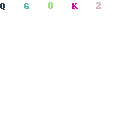Understanding the Standardized Field Sobriety Tests in Drunk Driving Cases
Understanding the Standardized Field Sobriety Tests in Drunk Driving Cases
 All too often in the world of criminal defense drunk driver representation, attorneys who do not concentrate in drunk driving defense will take on winnable drinking and driving cases and advise their clients to plead guilty. In many cases, the reason for this bad advice is based on an erroneous interpretation of the police report generated by the arresting officer. Contained within the report will undoubtedly be the officer’s rendition of the client’s performance of the officer’s field sobriety tests. Knowing and understanding the science behind the standardized tests, as well as the validity of the tests is vital to a successful defense for your client accused of drinking and driving.
All too often in the world of criminal defense drunk driver representation, attorneys who do not concentrate in drunk driving defense will take on winnable drinking and driving cases and advise their clients to plead guilty. In many cases, the reason for this bad advice is based on an erroneous interpretation of the police report generated by the arresting officer. Contained within the report will undoubtedly be the officer’s rendition of the client’s performance of the officer’s field sobriety tests. Knowing and understanding the science behind the standardized tests, as well as the validity of the tests is vital to a successful defense for your client accused of drinking and driving.
WHAT IS STANDARDIZED FIELD SOBRIETY TEST?
The United States Government, through the National Highway Traffic Safety Administration (NHTSA) has sponsored various studies and academic research to develop a uniform and relatively simple means to determine intoxication through a performance of tests. The purpose of this sponsorship was to provide police officers investigating drunk driving cases the ability to determine, as well as evidence, whether or not a drinking and driving suspect was under the influence of alcohol. The results of these efforts are the “Standardized Field Sobriety Tests,” commonly known as SFST’s.
The SFTS’s consist of three specific physical tests, which taken together are alleged to show a high likelihood that an individual’s blood alcohol content is over the legal limit. Specifically, these tests include the Walk and Turn, One-Leg Stand, and Horizontal Gaze Nystagmus Test.
THE HORIZONTAL GAZE NYSTAGMUS TEST
The Horizontal Gaze Nystagmus (HGN) Test is the test which the officer puts his or her finger in front of the suspect’s eyes and waives them around. Unfortunately for many drunk driving defendants, their lawyers do not understand how the officer is supposed to properly perform the test, nor do they realize what the officer is looking for. Nystagmus is an abnormal jerky movement of the eye. There is some questionable academic literature which finds that people with blood alcohol levels over the legal limit will have the presence of nystagmus in their eyes.
Prior to the performance of the test, the officer is required to check for “equal tracking” of the eyes by moving their finger or another object quickly across the face of the drunk driving suspect. Equal tracking means that the eyes have to move in uniform and at the same speed. Next, the officer is required to check to make sure the drinking and driving suspect’s pupils are of equal size. Finally, the officer is required to ask questions to the suspect regarding having any ailments which may result in a false positive on the HGN test.
The actual HGN test is then performed. The test itself consists of a six point system in which three different tests are performed on each eye, and if the sum of failed tests equals four or more points, the suspect is considered to have failed the test. Here are the tests as follows:
LACK OF SMOOTH PURSUIT – The officer moves the object slowly but steadily from the center of the subject’s face towards the left ear. The left eye should smoothly follow the object, but if the eye exhibits nystagmus, the officer notes the clue. The officer then checks the right eye.
DISTINCT NYSTAGMUS AT MAXIMUM DEVIATION – Starting again from the center of the suspect’s face, the officer moves the object toward the left ear, bringing the eye as far over as possible, and holds the object there for four seconds. The officer notes the clue if there is a distinct and sustained nystagmus at this point. The officer holds the object at maximum deviation for at least four seconds to ensure that quick movement of the object did not possibly cause the nystagmus. The officer then checks the right eye. This is also referred to as “end-point” nystagmus.
ANGLE OF ONSET OF NYSTAGMUS PRIOR TO FORTY-FIVE DEGREES – The officer moves the object at a speed that would take about four seconds for the object to reach the edge of the suspect’s left shoulder. The officer notes this clue if the point or angle at which the eye begins to display nystagmus is before the object reaches forty-five degrees from the center of the suspect’s face. The officer then moves the object towards the suspect’s right shoulder. For safety reasons, law enforcement officers usually use no apparatus to estimate the forty-five degree angle. Generally, forty-five degrees from center is at the point where the object is in front of the tip of the subject’s shoulder.
THE ONE-LEG STAND
In the One-Leg Stand test, the impaired driving suspect is instructed to stand with one foot approximately six inches off the ground and count aloud by …






 Honoring the firms that encourage ladies to rise to the highest. As discussed under, this approach has weaknesses, together with that it could not seize the most essential features of innovation, resembling whether a firm has an progressive culture through which everybody from the underside to top of the organization is engaged in innovation and efforts to continuously present better worth to shoppers.
Honoring the firms that encourage ladies to rise to the highest. As discussed under, this approach has weaknesses, together with that it could not seize the most essential features of innovation, resembling whether a firm has an progressive culture through which everybody from the underside to top of the organization is engaged in innovation and efforts to continuously present better worth to shoppers.
 How do you know the criminal attorney you are working with is the right one for you? It is not always easy to know if the lawyer you decide to work with is going to be a good option for your situation. However, you may be putting your future on the line and this person may be pulling the strings to determine what happens to you. From small crimes to large felonies, it is often necessary to examine the situation and the attorneys you are hiring. Are they the best possible option for your future?
How do you know the criminal attorney you are working with is the right one for you? It is not always easy to know if the lawyer you decide to work with is going to be a good option for your situation. However, you may be putting your future on the line and this person may be pulling the strings to determine what happens to you. From small crimes to large felonies, it is often necessary to examine the situation and the attorneys you are hiring. Are they the best possible option for your future?
 Senator Ted Cruz has responded to The New Yorker’s report that he accused Harvard Legislation Faculty of having had twelve” Communists who believed in the overthrow of the U.S. Authorities” on its school when he attended within the early nineties. This one-day conference, co-sponsored by Harvard Legislation Faculty and the Stigler Heart for the Examine of the Economy and the State on the University of Chicago’s Booth College of Enterprise, targeted on an important and dangerous political phenomenon: the populist plutocrat.” The populist plutocrat is a frontrunner who exploits the cultural and financial grievances of poorer, less-educated voters towards conventional elites in an effort to achieve and retain power, but who, as soon as in workplace, appear substantially or primarily concerned with enriching him- or herself, along with a relatively small circle of members of the family, cronies, and allies.
Senator Ted Cruz has responded to The New Yorker’s report that he accused Harvard Legislation Faculty of having had twelve” Communists who believed in the overthrow of the U.S. Authorities” on its school when he attended within the early nineties. This one-day conference, co-sponsored by Harvard Legislation Faculty and the Stigler Heart for the Examine of the Economy and the State on the University of Chicago’s Booth College of Enterprise, targeted on an important and dangerous political phenomenon: the populist plutocrat.” The populist plutocrat is a frontrunner who exploits the cultural and financial grievances of poorer, less-educated voters towards conventional elites in an effort to achieve and retain power, but who, as soon as in workplace, appear substantially or primarily concerned with enriching him- or herself, along with a relatively small circle of members of the family, cronies, and allies.

 US Drug Possession Scene
US Drug Possession Scene

 Filing a lawsuit is a rigorous and meticulous process. Many people file a lawsuit when there is a violation on their rights. Other groups file a case when a person has violated the state rule or policy. Almost in any case, it is always the victim who decides whether or not to pursue the case. There are some victims who would like to remain silent because they are afraid or ashamed of public or court appearances.
Filing a lawsuit is a rigorous and meticulous process. Many people file a lawsuit when there is a violation on their rights. Other groups file a case when a person has violated the state rule or policy. Almost in any case, it is always the victim who decides whether or not to pursue the case. There are some victims who would like to remain silent because they are afraid or ashamed of public or court appearances. If an elderly parent, relative, or friend starts to experience difficulties performing his or her activities of daily living, a plethora of community services are available today to help meet those needs. The most efficient way to find out what is available in a particular geographical area is to ask physicians, nurses, social workers, clergy, and friends or acquaintances who may have already had to deal with this same issue. Today, only a minority of people in their senior years live in nursing homes because so many other options are available. In many cases, it is even possible for a senior to remain at home.
If an elderly parent, relative, or friend starts to experience difficulties performing his or her activities of daily living, a plethora of community services are available today to help meet those needs. The most efficient way to find out what is available in a particular geographical area is to ask physicians, nurses, social workers, clergy, and friends or acquaintances who may have already had to deal with this same issue. Today, only a minority of people in their senior years live in nursing homes because so many other options are available. In many cases, it is even possible for a senior to remain at home. Dedicated to adding worth to legislation firms and their partners all through the world. Legislation firm professionals are charged with the onerous job of tracking pretty much each minute of their time so the firm can invoice those minutes to their clients. Sensible programs propel attorneys at this agency. Giving attorneys an intranet-linked laptop computer or pill and permitting them to work from wherever—as this firm began doing in 2016—makes face time much less obligatory; some even telecommute full-time.
Dedicated to adding worth to legislation firms and their partners all through the world. Legislation firm professionals are charged with the onerous job of tracking pretty much each minute of their time so the firm can invoice those minutes to their clients. Sensible programs propel attorneys at this agency. Giving attorneys an intranet-linked laptop computer or pill and permitting them to work from wherever—as this firm began doing in 2016—makes face time much less obligatory; some even telecommute full-time. Dealing with a drug defense case involves several steps. The client should be informed about the proceedings. It is crucial for the client to obtain a legal representative who can act immediately. Once the user is arrested, the drug defense attorney should seek out the copy of the arrest warrant. In some cases, the client does not have the copy, so the lawyer may have to get it at the clerk of court’s office.
Dealing with a drug defense case involves several steps. The client should be informed about the proceedings. It is crucial for the client to obtain a legal representative who can act immediately. Once the user is arrested, the drug defense attorney should seek out the copy of the arrest warrant. In some cases, the client does not have the copy, so the lawyer may have to get it at the clerk of court’s office. DLA Piper is a world regulation firm with legal professionals located in more than 40 countries throughout the Americas, Europe, the Middle East, Africa and Asia Pacific, positioning us to help clients with their legal wants all over the world. The Potts Law Agency seeks justice for our shoppers from coast to coast. Over the many years we have now been careful to build our international presence utilizing a mixture of local lawyers with demonstrable native information and totally integrated teams acting together at a global level.
DLA Piper is a world regulation firm with legal professionals located in more than 40 countries throughout the Americas, Europe, the Middle East, Africa and Asia Pacific, positioning us to help clients with their legal wants all over the world. The Potts Law Agency seeks justice for our shoppers from coast to coast. Over the many years we have now been careful to build our international presence utilizing a mixture of local lawyers with demonstrable native information and totally integrated teams acting together at a global level. Getting entangled into criminal process is never a good sign. Whether you have committed a crime or not you may undergo several painstaking stages. Sometimes the cases could be complex and surprising also. There fore one must understand the legal rights well.
Getting entangled into criminal process is never a good sign. Whether you have committed a crime or not you may undergo several painstaking stages. Sometimes the cases could be complex and surprising also. There fore one must understand the legal rights well.
 Heller students within the Conflict Decision and Coexistence program are mechanically a part of the Program on Negotiation (PON) at Harvard Regulation School. For example, you’re receiving a world-class schooling, are prone to be financially secure for the remainder of your life, and now have the political entry that comes with a level from this establishment. The Graduate Program is the division of Harvard Regulation College responsible for the Master of Legal guidelines (LLM) and the Doctor of Juridical Science (SJD) degrees.
Heller students within the Conflict Decision and Coexistence program are mechanically a part of the Program on Negotiation (PON) at Harvard Regulation School. For example, you’re receiving a world-class schooling, are prone to be financially secure for the remainder of your life, and now have the political entry that comes with a level from this establishment. The Graduate Program is the division of Harvard Regulation College responsible for the Master of Legal guidelines (LLM) and the Doctor of Juridical Science (SJD) degrees. If you regularly drive a vehicle, you never know when you may be booked for a DUI offence. Those who have been charged with this offence in Arizona know that the laws of this place with regard to driving under of influence of intoxicants are rather stringent. If you have been accused of this offence, do not panic because you will get justice if you are represented by a reliable DUI lawyer.
If you regularly drive a vehicle, you never know when you may be booked for a DUI offence. Those who have been charged with this offence in Arizona know that the laws of this place with regard to driving under of influence of intoxicants are rather stringent. If you have been accused of this offence, do not panic because you will get justice if you are represented by a reliable DUI lawyer. With the way and frequency criminal laws are changing, being charged with a crime can become a burdensome ordeal that may make you feel as if you are in a never-ending nightmare. Many prosecutors are attempting to get recognition and the best way they can do so is to throw the book at every person that is being charged with a crime. This is one of those situations in life where you can’t afford to just go with the flow. Even if you personally feel that there is not enough evidence to convict you, if you are being charged, chances are the prosecution feels they have a solid case against you.
With the way and frequency criminal laws are changing, being charged with a crime can become a burdensome ordeal that may make you feel as if you are in a never-ending nightmare. Many prosecutors are attempting to get recognition and the best way they can do so is to throw the book at every person that is being charged with a crime. This is one of those situations in life where you can’t afford to just go with the flow. Even if you personally feel that there is not enough evidence to convict you, if you are being charged, chances are the prosecution feels they have a solid case against you. In criminal proceedings, one of the major points that can determine how sentencing plays out is the intention of the criminal. Known as the mens rea, a Latin legal phrase that describes a guilty mind, this point of contention can either upgrade a charge, and therefore the penalties, or make the difference between two important legal shades of distinction. Criminal intent has been refined under American criminal law to address the major modes in which a person could know or wish for harm to come upon another.
In criminal proceedings, one of the major points that can determine how sentencing plays out is the intention of the criminal. Known as the mens rea, a Latin legal phrase that describes a guilty mind, this point of contention can either upgrade a charge, and therefore the penalties, or make the difference between two important legal shades of distinction. Criminal intent has been refined under American criminal law to address the major modes in which a person could know or wish for harm to come upon another.
 On a budget and need a criminal attorney? Finding this service is often a major concern for anyone wanting to find a good lawyer willing to represent them in a dire time of need. It’s that much more important when those needing a criminal attorney have less to spend in a slumped economy. By keeping a few things in mind when choosing a lawyer, consumers can easily save money while keeping sane.
On a budget and need a criminal attorney? Finding this service is often a major concern for anyone wanting to find a good lawyer willing to represent them in a dire time of need. It’s that much more important when those needing a criminal attorney have less to spend in a slumped economy. By keeping a few things in mind when choosing a lawyer, consumers can easily save money while keeping sane. Criminal and penal law refers to the same type of law. Punishments under these laws can be severe and unique depending on the offense and the jurisdiction. Imprisonment, execution, parole, probation and fines are the most common forms of punishment. On occasion, the lines between civil and criminal law become blurred.
Criminal and penal law refers to the same type of law. Punishments under these laws can be severe and unique depending on the offense and the jurisdiction. Imprisonment, execution, parole, probation and fines are the most common forms of punishment. On occasion, the lines between civil and criminal law become blurred.
 If you’re in a situation that requires the aid of an experienced criminal attorney, there are a few things you can do to help with your defense. If you’re not alert and attentive, you run the risk of losing your case and incurring the consequences that come along with it. By taking a vested interest in your attorney and your case overall, you can effectively improve your chances of obtaining the best possible ruling. Keep in mind that it is your freedom at stake, and any little bit of help is going directly in support of just that. In this article, we will outline a few instructions to help you help yourself.
If you’re in a situation that requires the aid of an experienced criminal attorney, there are a few things you can do to help with your defense. If you’re not alert and attentive, you run the risk of losing your case and incurring the consequences that come along with it. By taking a vested interest in your attorney and your case overall, you can effectively improve your chances of obtaining the best possible ruling. Keep in mind that it is your freedom at stake, and any little bit of help is going directly in support of just that. In this article, we will outline a few instructions to help you help yourself. Select the DUI lawyer who can defend you the best way possible. By following the tips outlined below, you will make sure that the DUI lawyer you select is more than qualified to take your case. This will offer you peace of mind as you go through the ordeal of a trial.
Select the DUI lawyer who can defend you the best way possible. By following the tips outlined below, you will make sure that the DUI lawyer you select is more than qualified to take your case. This will offer you peace of mind as you go through the ordeal of a trial.
 McKinsey makes use of cookies to improve website functionality, offer you a greater looking expertise, and to allow our partners to advertise to you. Making the trail to development clear to attorneys (as this agency does with its affiliate career mannequin) inspires ladies right here: In 2016, they earned 68% of fairness partner promotions. Tax Legislation Apply, together with to support the tax crew of KPMG in Taiwan on every legal aspect of tax matters.
McKinsey makes use of cookies to improve website functionality, offer you a greater looking expertise, and to allow our partners to advertise to you. Making the trail to development clear to attorneys (as this agency does with its affiliate career mannequin) inspires ladies right here: In 2016, they earned 68% of fairness partner promotions. Tax Legislation Apply, together with to support the tax crew of KPMG in Taiwan on every legal aspect of tax matters.
 There is no rule that a criminal attorney has to specialize in defense. In fact, many of these companies actually work on both sides of the law, and in civil trials as well. The problem with this, though, is that there is less specialization. That lack of specialization can lead to complexities in the way the attorney handles business. While having a lawyer by your side is not something you should do without, having the right person there will make all of the difference in the outcome of your case.
There is no rule that a criminal attorney has to specialize in defense. In fact, many of these companies actually work on both sides of the law, and in civil trials as well. The problem with this, though, is that there is less specialization. That lack of specialization can lead to complexities in the way the attorney handles business. While having a lawyer by your side is not something you should do without, having the right person there will make all of the difference in the outcome of your case. Whether you have been booked for an offense or not, it is important to have some idea of the best criminal lawyer in your state. This will come handy when you are in a sticky situation where you need immediate legal counsel. If you employ a good criminal lawyer, you stand a good chance of getting the case dismissed, probation granted or jail time reduced. Sometimes, you may even avoid going to court. That is why it is important to choose wisely.
Whether you have been booked for an offense or not, it is important to have some idea of the best criminal lawyer in your state. This will come handy when you are in a sticky situation where you need immediate legal counsel. If you employ a good criminal lawyer, you stand a good chance of getting the case dismissed, probation granted or jail time reduced. Sometimes, you may even avoid going to court. That is why it is important to choose wisely.
 Honoring the firms that encourage women to rise to the highest. The Potts Legislation Agency seeks justice for our shoppers from coast to coast. Over the many years we have now been careful to construct our worldwide presence utilizing a combination of native legal professionals with demonstrable local information and absolutely built-in teams appearing collectively at a global level.
Honoring the firms that encourage women to rise to the highest. The Potts Legislation Agency seeks justice for our shoppers from coast to coast. Over the many years we have now been careful to construct our worldwide presence utilizing a combination of native legal professionals with demonstrable local information and absolutely built-in teams appearing collectively at a global level. The Murthy authorized crew supplies employers and staff with the most recent and most applicable immigration strategies in the United States or around the globe. Over 800 locally certified attorneys with worldwide connections advise on Banking, Commercial Litigation & Arbitration, Company, Development, Company Finance & M&A, Debt Assortment, Employment, EU & Competitors, Family & Private Enterprise, Insolvency & Turnaround, Maritime & Worldwide trade, Actual Estate, Sports activities, Tax & Trusts and IP, Know-how & Media points.
The Murthy authorized crew supplies employers and staff with the most recent and most applicable immigration strategies in the United States or around the globe. Over 800 locally certified attorneys with worldwide connections advise on Banking, Commercial Litigation & Arbitration, Company, Development, Company Finance & M&A, Debt Assortment, Employment, EU & Competitors, Family & Private Enterprise, Insolvency & Turnaround, Maritime & Worldwide trade, Actual Estate, Sports activities, Tax & Trusts and IP, Know-how & Media points. Driving is not only a privilege, but can be a huge responsibility. From car accidents to other situations such as traffic offenses, driving can also be quite costly. This is especially true for those that may be charged with one or any of the violations that drivers can be cited with. Not only may these drivers face the suspension of their license, but may often have to pay heavy fines or serve jail time.
Driving is not only a privilege, but can be a huge responsibility. From car accidents to other situations such as traffic offenses, driving can also be quite costly. This is especially true for those that may be charged with one or any of the violations that drivers can be cited with. Not only may these drivers face the suspension of their license, but may often have to pay heavy fines or serve jail time.
 You have been charged with a crime and you need a lawyer to defend you. As you go about searching for criminal attorneys to meet with, you need to be armed with the questions you plan to ask and the paperwork that you need to show them.
You have been charged with a crime and you need a lawyer to defend you. As you go about searching for criminal attorneys to meet with, you need to be armed with the questions you plan to ask and the paperwork that you need to show them.
 Upon your indictment, hopefully your white-collar criminal attorney has been able to arrange a self surrender turn-in. The alternative is that you are surprised by federal agents and taken into custody at your home, job, or other some publicly humiliating place.
Upon your indictment, hopefully your white-collar criminal attorney has been able to arrange a self surrender turn-in. The alternative is that you are surprised by federal agents and taken into custody at your home, job, or other some publicly humiliating place.